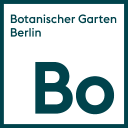Title
GinJinn: An object-detection pipeline for feature extraction from herbarium specimensStable Identifier
For the dataset:https://data.bgbm.org/dataset/gfbio/0033/ For the latest version of the dataset:
https://doi.org/10.34656/vnat-x410.1
Citation
Ott, T.; Palm, C.; Vogt, R. and Oberprieler C. (2020). GinJinn: An object-detection pipeline for feature extraction from herbarium specimens. [Dataset]. Data Publisher: Botanic Garden and Botanical Museum Berlin. https://data.bgbm.org/dataset/gfbio/0033/Data
| Version | Date | Comment | Format | Download |
|---|---|---|---|---|
| 1 | 2019-09-11 | a zip files, containing 285 images and 243 corresponding XML shape files. Total size: ≈ 890 MiB. (original data) | PASCAL VOC XML |  |
Licenses
Details
The collection of morphological data in plant evolutionary, taxonomic and ecological studies based on herbarium material has traditionally been a labor-intensive task. We establish GinJinn as a deep-learning object-detection tool for the automatic recognition and extraction of individual leaves or other structures from herbarium specimens. As an example, GinJinn is applied to herbarium specimens of two species of ox-eye daisies of the genus Leucanthemum Mill., namely the diploid L. vulgare Lam. and the tetraploid L. ircutianum DC.Additional Info
| Creators | Tankred Ott  , Dr. Robert Vogt , Dr. Robert Vogt |
| Contributors | Christoph Oberprieler  , Christoph Palm , Christoph Palm  |
| Technical Contact | biodiversitydata@bgbm.org |
| Last updated | 2019-09-11 |
| Created | 2019-09-11 |
| Record Basis | Multimedia Object |
| Keyword(s) | object detection, deep learning, herbarium specimen |

